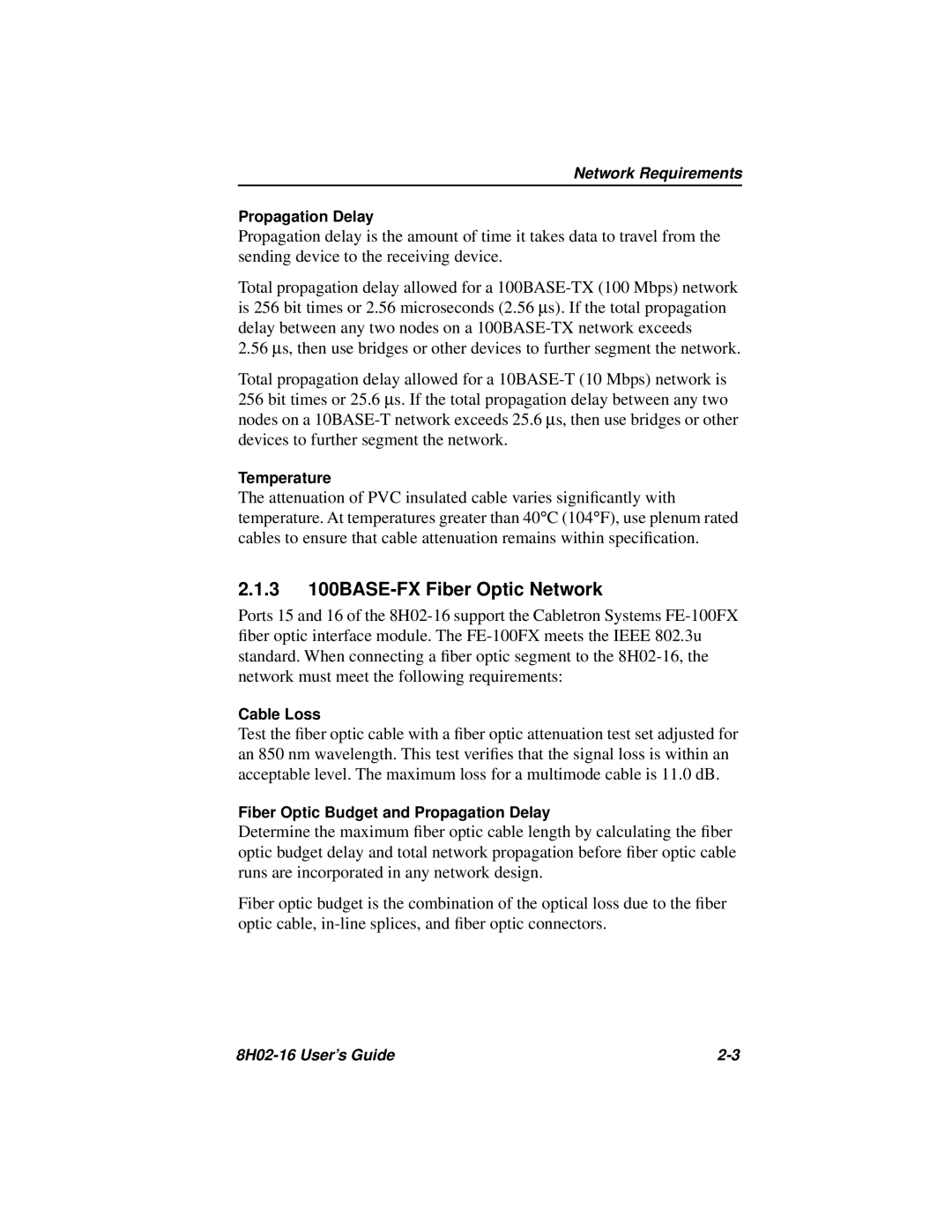Network Requirements
Propagation Delay
Propagation delay is the amount of time it takes data to travel from the sending device to the receiving device.
Total propagation delay allowed for a
2.56 ∝s, then use bridges or other devices to further segment the network.
Total propagation delay allowed for a
Temperature
The attenuation of PVC insulated cable varies significantly with temperature. At temperatures greater than 40°C (104°F), use plenum rated cables to ensure that cable attenuation remains within specification.
2.1.3100BASE-FX Fiber Optic Network
Ports 15 and 16 of the
Cable Loss
Test the fiber optic cable with a fiber optic attenuation test set adjusted for an 850 nm wavelength. This test verifies that the signal loss is within an acceptable level. The maximum loss for a multimode cable is 11.0 dB.
Fiber Optic Budget and Propagation Delay
Determine the maximum fiber optic cable length by calculating the fiber optic budget delay and total network propagation before fiber optic cable runs are incorporated in any network design.
Fiber optic budget is the combination of the optical loss due to the fiber optic cable,
|
